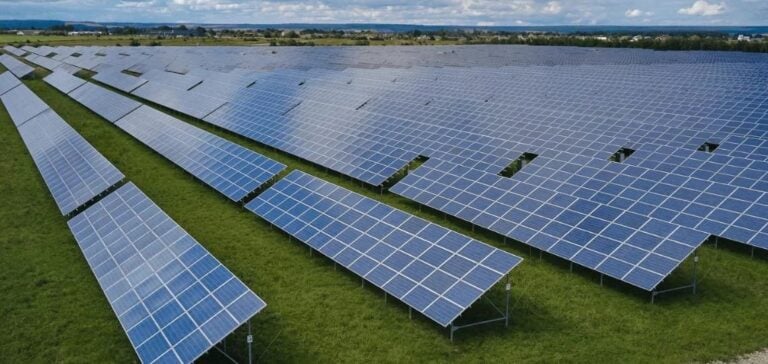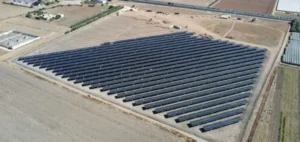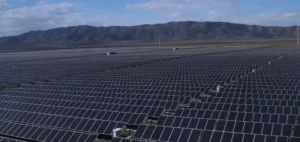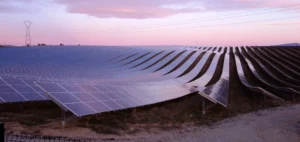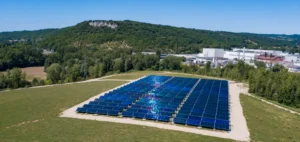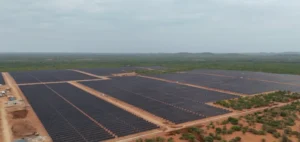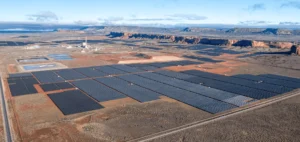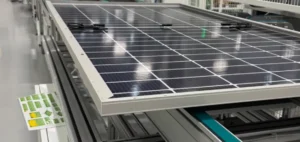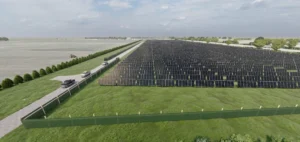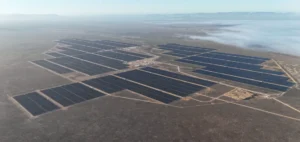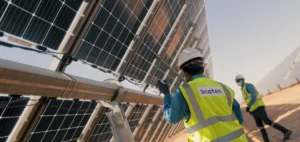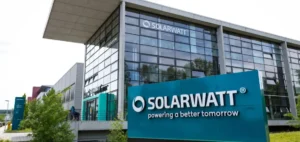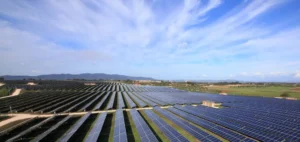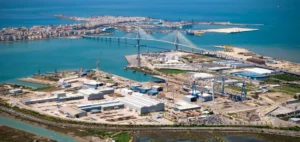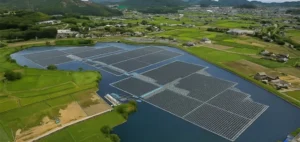Corsica Sole has inaugurated a photovoltaic plant built on a former industrial brownfield in Pithiviers, in the Loiret. Covering 11 hectares, the site, once occupied by a fertiliser plant, has been reconfigured to host a solar facility with an estimated annual output of 14 GWh. This commissioning reflects the independent producer’s strategy focused on rolling out solar projects on already artificialised land.
The plant is sized to supply the equivalent of the electricity consumption of nearly 9,000 residents, including heating, according to data published by the French Agency for Ecological Transition (ADEME) in 2023. The photovoltaic panels are mounted on raised concrete foundations (longrines), preserving soil integrity and reducing the project’s impact on stormwater runoff.
A rollout built on a structured industrial ecosystem
Delivery mobilised several technical and financial partners. French company Sireos led construction, while grid connection was handled by SICAP. The technical audit was carried out by Greensolvers, and financing was structured with the support of Société Générale and Monte Cristo Advisory. This arrangement reflects an operating model rooted in an optimised local rollout logic.
The land, owned by Groupe Roullier, underwent more than ten years of environmental securing before the plant’s installation. These interventions isolated sensitive zones on the site and ensured an energy use compliant with regulatory requirements for contaminated soils.
A construction schedule planned around environmental constraints
Works began in September and finished in spring, with commissioning at the start of summer. A prior ecological survey led to the establishment of exclusion zones and the preservation of movement corridors for small fauna. Earthworks were limited to protect existing vegetation, in a controlled environmental impact approach. As part of local engagement, Corsica Sole organised an educational visit for ten classes from Pithiviers primary schools, totalling nearly 250 pupils. An explanatory panel has been installed at the site entrance to inform visitors about the plant’s operation and production objectives.
Land reuse and infrastructure optimisation
The Pithiviers site is part of a deployment strategy prioritising disused land near urban centres. This approach reduces connection lead times, contains infrastructure costs and avoids the use of farmland. It also meets a growing need for decentralised electricity production, while promoting the reuse of inactive industrial sites.
The commissioning strengthens regional solar electricity output and relies on coordination between public bodies, specialist companies and financial partners. It demonstrates a deployment model that can be replicated on other available industrial brownfields nationwide.


